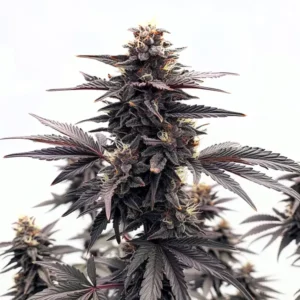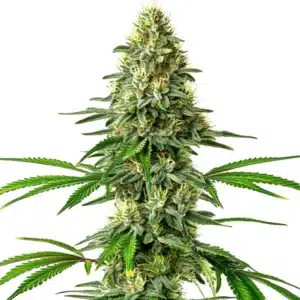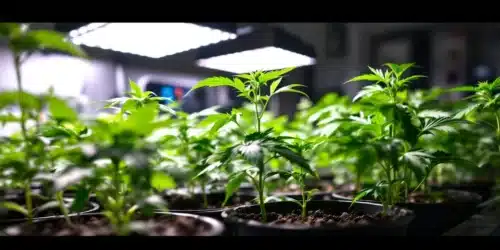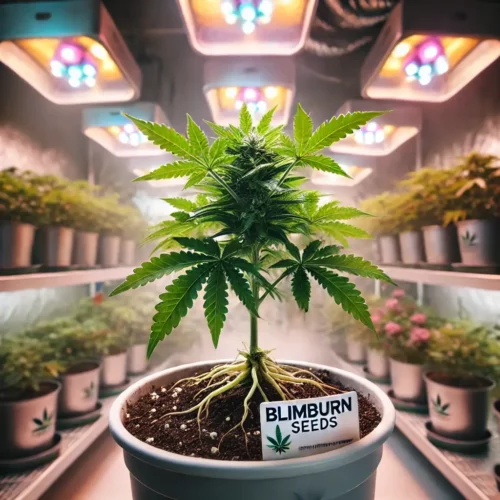Best Timing for Cloning Cannabis Plants
Plant Growth Phases for Cloning Weed
Knowing when to clone weed is key to successful cannabis cultivation. Timing is essential if you want robust, healthy clones that yield potent plants. During the cannabis life cycle, certain phases are ideal for cloning, while others can weaken the clone’s success. As your cannabis plant grows, it goes through stages that affect its ability to produce strong clones.
The vegetative phase generally offers the best time to clone weed, as the plant is actively growing with high energy reserves, focused on foliage and branching. This phase makes it easier for clones to establish roots and thrive.
Signs a Cannabis Plant is Ready for Cloning
Look for signs of vibrant health before taking clones. Ideal indicators include thick stems, bright green leaves, and an established root system. When the plant has robust growth and no signs of stress, it’s ready to provide high-quality clones.
If the plant shows early signs of flowering, cloning might still be possible, but expect lower success rates. Cuttings taken from lower branches in the vegetative phase are more robust and closer to nutrient sources, making them prime candidates for rooting.
Avoiding Cloning Timing Errors
Cloning too early or too late in the plant’s cycle can impact clone quality. Avoid taking clones from a plant in late flowering or one under stress, as this can lead to slower root development and reduced vigor. Waiting too long or cloning from a nutrient-deficient plant can result in weak clones that struggle to establish roots.

Promos & Deals
Ideal Growth Stage for Cloning Weed
Cloning During the Vegetative Stage
Cloning during the vegetative phase yields the best results. During this stage, cannabis plants experience rapid growth and can support the creation of strong, viable clones. When you clone weed in this phase, cuttings establish roots quickly and develop vigorous growth.
This stage also provides flexibility in light schedules, allowing clones to thrive under 18-24 hours of light for fast root growth. With balanced lighting and nutrients, clones from this stage can root within 7-14 days.
Cloning in Early Flowering: Is It Possible?
While cloning during early flowering is possible, it comes with challenges. Some growers experiment with cloning within the first two weeks of flowering, known as “monster cropping.” However, clones taken during this stage often take longer to revert to vegetative growth and may display unusual branching.
If you clone in early flowering, be prepared to make nutrient and environmental adjustments for stability. While monster cropping can yield unique plant traits, cloning in the vegetative phase is typically more predictable.
Benefits of Cloning During Specific Stages
Cloning during the vegetative phase ensures healthy clones that quickly root and grow. Some growers prefer cloning in pre-flowering to enhance specific plant traits, like denser foliage. Vegetative cloning promotes overall plant growth, while pre-flowering clones may show increased budding once they reenter vegetative growth.
Choosing specific stages for cloning can directly affect yield and potency. Selecting the best phase supports clones that inherit strong genetics, leading to higher quality in the final product.
Seasonal Considerations for Cloning
Outdoor Cloning: Best Months and Conditions
For outdoor growers, the best months to clone weed are during spring and early summer when plants are naturally in the vegetative phase. Cloning in these months allows clones to benefit from long daylight hours, which supports healthy growth and rapid root development.
In outdoor settings, timing is critical due to seasonal changes. Start clones early in the year to allow ample time for root establishment before flowering begins in late summer. Using a cloning dome or mini greenhouse can further protect outdoor clones from sudden temperature fluctuations and maintain optimal humidity levels.
Indoor Cloning and Year-Round Possibilities
Indoor growing gives you complete control over your light schedule, allowing year-round cloning opportunities. By maintaining a consistent 18-24 hours of light, you can clone anytime, regardless of the season. This flexibility makes indoor cloning ideal for perpetual harvest setups, where you can maintain a continuous cycle of clones and mature plants.
Controlling humidity, temperature, and light duration indoors ensures clones develop strong roots. Indoor cloning allows growers to match clone schedules with plant needs, enabling a steady and reliable output.
Adjusting Cloning Times Based on Environmental Conditions
Whether you grow indoors or outdoors, adapting to environmental conditions ensures better clone health. In high humidity environments, clones may root faster, but too much moisture can lead to mold. In drier climates, use humidity domes or regular misting to keep clones hydrated.
Temperature adjustments are also important. Clones thrive at temperatures between 70-77°F (21-25°C), so adjusting for seasonal and environmental factors ensures clones have a stable environment for optimal rooting.
Preparing Your Cannabis Plant for Cloning
Strengthening Your Plant Before Cloning
Healthy clones start with a well-prepared mother plant. A nutrient-rich feeding schedule before cloning enhances the plant’s resilience and improves clone quality. Focus on providing balanced nutrients, especially nitrogen, to support vigorous growth, thick stems, and green foliage.
Avoid taking clones if the plant shows any signs of nutrient deficiencies. Strengthening the plant with proper nutrients and hydration ensures cuttings are strong and capable of rooting efficiently.

Nutrient and Light Needs Leading Up to Cloning
Leading up to cloning, maintain an 18-24 hour light schedule and avoid heavy pruning, as this allows the plant to channel energy into growth. Feeding with micronutrients, like calcium and magnesium, strengthens stems and improves tissue quality, essential for a successful clone.
Regular but moderate watering encourages a healthy root system in the mother plant, and maintaining steady temperatures around 70-77°F supports robust growth and vibrant foliage, ensuring the plant can support high-quality clones.
Selecting the Best Branches for Successful Clones
Selecting the right branches significantly impacts clone success. Choose branches with thick stems and at least two sets of leaves, as these cuttings root faster and develop into stronger plants. Aim for branches in the middle to lower part of the plant, as these have access to more nutrients and are generally more mature.
By choosing healthy, well-positioned branches, you’ll achieve better rooting success and create clones that quickly establish themselves in their new environment.
Timing and Cloning Success Factors
Timing’s Impact on Root Development
When you clone weed at the right time, the cuttings establish roots quickly and efficiently. During the vegetative phase, cannabis plants allocate energy towards growth and root development, so clones taken at this time root faster and with less resistance.
Ensuring clones have a stable environment with consistent light and temperature further enhances root development. Proper timing allows for strong, healthy roots that set the foundation for successful growth.
Effects of Age and Size on Clone Health
The age and size of your mother plant influence clone success. Older, well-established plants typically produce better clones due to their robust growth patterns and nutrient reserves. Cloning from plants that are at least six weeks into the vegetative stage ensures that cuttings have access to high-quality tissue.
If the mother plant is too young or too small, clones may struggle to root and grow. By waiting until the plant is mature and well-fed, you create stronger clones that are more resilient in the rooting process.
Tips for Maximizing Success in Each Cloning Window
Cloning success isn’t just about timing but also about technique. Using sharp, sterile tools prevents damage and contamination, and applying rooting hormones can improve rooting speed. Place clones in an environment with consistent humidity (around 70-80%) and temperature to minimize transplant shock and encourage healthy roots.
Maintain a close eye on clones during the first week to ensure they remain hydrated and are developing roots. Regular misting and consistent light exposure promote stability, helping clones adapt quickly to their new growing medium.
Choosing the Right Mother Plant for Cloning
The success of your clones largely depends on the quality of the mother plant. When selecting a mother plant, aim for one that is not only healthy but also exhibits the desired traits you want to replicate. Look for plants that have strong growth patterns, resistance to pests, and high yields. Selecting a mother plant that is at least two months old in the vegetative stage is ideal, as this ensures it has reached a mature and stable growth stage. If your mother plant has consistently shown resilience and robustness, you are more likely to achieve successful and vigorous clones.
The Importance of Light Spectrum for Clones
Light spectrum plays a key role in clone development. Cannabis clones benefit from a cool light spectrum with a color temperature between 4000-6500K, which mimics daylight and encourages healthy rooting. Avoid lights with high red spectrums, as these promote flowering rather than root growth. LED lights are a popular choice for cloning due to their energy efficiency and ability to provide a precise spectrum. Position the lights around 12-18 inches above your clones to avoid light stress, and ensure even distribution across the canopy to prevent any clones from receiving too little or too much light. Proper light spectrum control supports faster root development, resulting in healthier clones.
Essential Steps for Preparing and Nurturing Cannabis Clones

Managing Humidity and Temperature for Successful Cloning
Humidity and temperature control are essential for clones to root effectively. Cannabis clones thrive in a humidity range of 70-80% during the early rooting stage, as it prevents them from drying out. Use a humidity dome for indoor clones to maintain high humidity and check it regularly to avoid excess moisture that can lead to mold. Temperature is equally important, with an ideal range of 70-77°F. Keeping the environment within these parameters reduces stress on clones, supports faster rooting, and lowers the risk of fungal diseases.Preparing the Cutting Environment
The environment where you will take and root cuttings is crucial for clone success. Before you start, make sure to disinfect your tools, as sterile equipment minimizes the risk of contamination and disease in new clones. Prepare a rooting medium, such as a mix of coco coir, perlite, or a light soil blend, and ensure it is moist but not overly saturated. Setting up a dedicated cloning space with controlled lighting, humidity, and temperature will help clones transition smoothly from cuttings to established plants. Maintaining a clean, optimized environment fosters healthy root development and reduces early-stage stress on your clones.
Using Rooting Hormones to Enhance Clone Growth
Rooting hormones can significantly improve the success rate of cannabis clones by stimulating root growth. Choose between liquid, powder, or gel-based rooting hormones, with each offering unique benefits for clone development. Dip the bottom of each cutting in the hormone before placing it into the rooting medium to encourage quicker, more robust root formation. Using rooting hormones is particularly helpful for beginners or anyone aiming to speed up the rooting process. By enhancing early root development, these hormones increase the likelihood of achieving strong, viable clones ready for transplant.
Watering and Feeding Clones for Optimal Health
Proper watering and feeding practices are essential for the health of cannabis clones. In the initial stages, clones don’t need much water since they lack roots; misting them lightly with a spray bottle will maintain necessary moisture without overwatering. As clones begin to root, gradually introduce a mild nutrient solution, low in nitrogen but balanced in essential minerals. Over-fertilizing can harm young clones, so always start with diluted nutrient solutions and monitor their response. Ensuring clones receive the right balance of water and nutrients will promote healthy, resilient plants ready for robust growth in the next stages.
FAQs on Timing for Cloning Weed Plants
When is the Best Time to Clone Weed?
The optimal time to clone weed is during the vegetative growth phase, ideally when the mother plant has developed strong, healthy branches. This timing ensures clones are taken from a vigorous plant, leading to faster rooting and better overall growth. For outdoor growers, early spring to summer is ideal, while indoor growers can clone year-round by controlling light schedules.
Can You Clone Weed During Flowering?
While it’s possible to clone cannabis during the early flowering phase, it is generally less effective than cloning during vegetative growth. Clones taken during flowering tend to root slower and may need additional time to revert back to vegetative growth. If you must clone during flowering, aim for the first one to two weeks of the flowering phase for the best chance of success.
How Do Environmental Conditions Impact Cloning Success?
Environmental factors like temperature, humidity, and light exposure play a significant role in cloning success. For best results, maintain temperatures between 70-77°F and humidity around 70-80% during the initial rooting period. Adjust these conditions based on the season and whether you’re growing indoors or outdoors, as stable environments lead to faster root development and healthier clones.
What Should I Look for in a Cannabis Plant Before Cloning?
Look for a cannabis plant that is robust, healthy, and at least six weeks into the vegetative stage. Choose a mother plant with no signs of nutrient deficiencies or pests, and focus on branches with thick stems and abundant leaves, as these cuttings are more likely to root quickly and grow into strong plants.
How Can I Improve Root Development in Clones?
To encourage root development, provide clones with a gentle but consistent light source, ideally around 18-24 hours per day. Keep humidity high (70-80%) and use a rooting hormone to accelerate the process. Maintaining steady, moderate temperatures and monitoring clones closely during the first week helps them adapt, reduce transplant shock, and grow a healthy root system.
Can Cloning Be Done Year-Round?
Yes, cloning can be done year-round, especially in indoor environments where light and climate can be carefully controlled. By maintaining a stable 18-24 hour light schedule, you can clone weed anytime. This flexibility allows indoor growers to keep a continuous cycle of plants, with clones ready to replace harvested plants, ensuring a steady supply.
What Light Schedule Works Best for Clones?
An 18/6 or even a 24-hour light schedule is commonly recommended for clones, as it encourages root development without promoting flowering. For optimal growth, use lights with a cool spectrum around 4000-6500K, and place them close enough to keep clones warm without causing light stress.
These answers cover common questions and best practices for timing and environmental conditions, helping you navigate the cloning process for healthier plants and more successful growth.
















